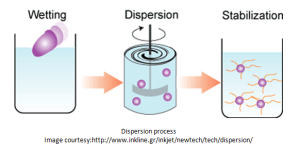When you are in the arena of business that relates to food and other edibles, there are a lot of things that you need to take care of. While quality of the food and edibles should be the top most priority for any business owner, it is also important that they are able to pay attention to the aesthetics of the food that they sell. You need to make sure that you choose to opt for the right kind of food or lake colors so that you are able to serve your end users with comprehensive effectiveness in terms of quality as well as the look of the food. As per experts, the use of the right food colors can influence your food business to a great extent, which is why it is important to pick the most viable food or lake colors for your need. Here are a couple of pointers that you can use in picking out the best lake dyes for your food:
Pick the Best Manufacturers: One of the most important things that you need to do in picking out the best food colors for your need is to get in touch with the most viable manufacturers of the product. You need to look for a manufacturer that pays special attention to the quality of the colors so that you can provide the best to your clients as well.
Check for Powder Density: When you want to make the most of your lake or food colors, you need to make sure that you get the right density of the powders. It is important to be able to get fine powders in the lake colors so that you are able to make extremely precise and optimal use of the powders.
Excellent Light Fastness: One of the biggest risks that food colours face is with light and heat. It is important that the colours hold excellent fastness to light so that you do not have to worry about the colours fading in the event of exposure to extreme light. This is something that can be ensured when you choose to get your food colours from the best manufacturers possible.
Better Opacity: When you are able to get your hands on the opaquest of the lake colours you can be sure about providing the users with the option of getting better food colouring results even with a small quantity of the dye. This is something that is important in being able to get the best usability and value for money out of the product.
Uniformity in Shade: In the colouring of food products, edibles or other pharmaceutical products, it is important that uniformity in shade is achieved. With the help of the best lake or food colours, it is possible to make sure that you are able to get excellent shade uniformity no matter how many coats are made and how many batches are released.
These are some of the most important elements in the procurement of food or lake colours.
